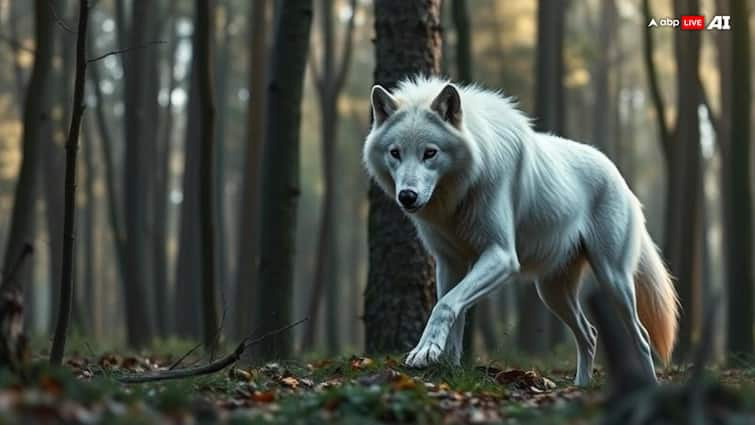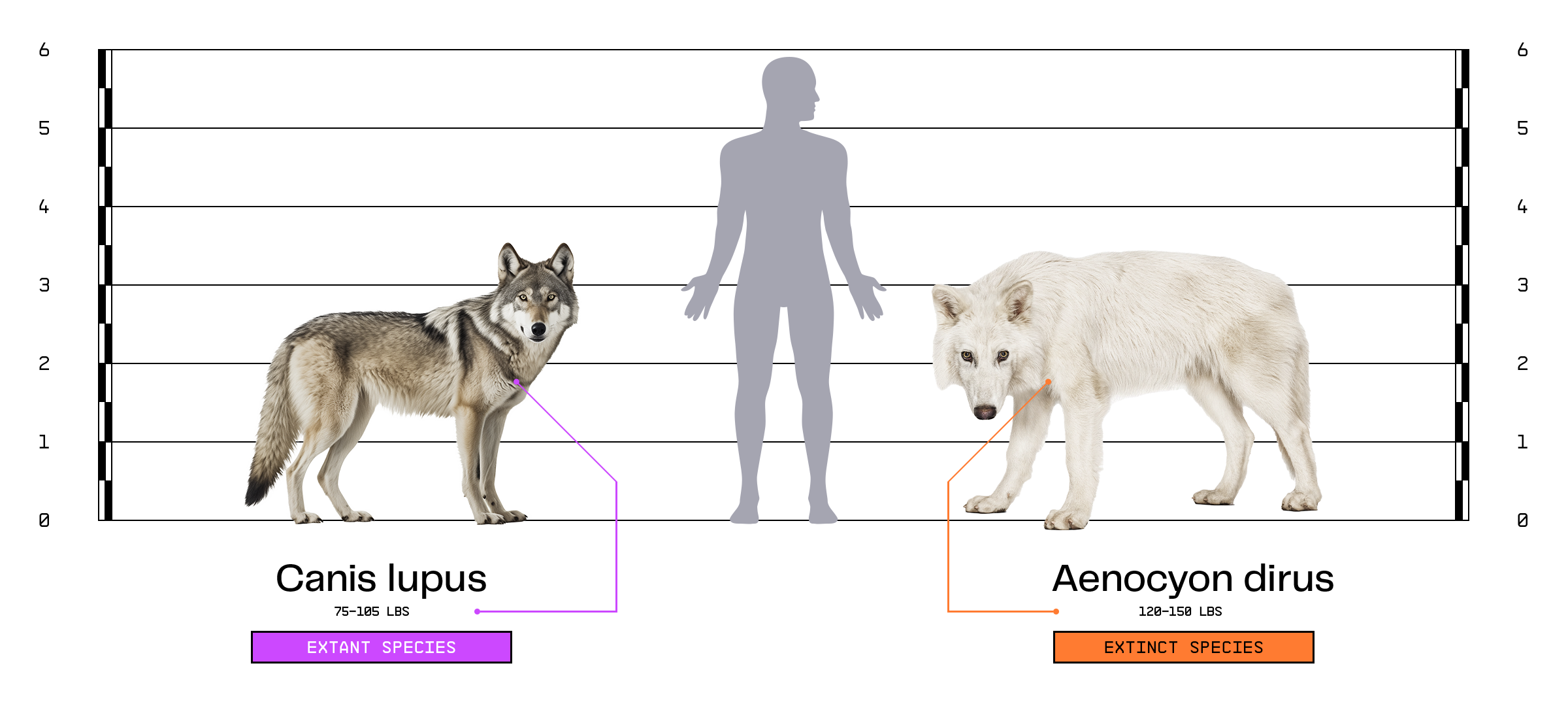
Hold onto your seats. The House of Starks has risen again! What might seem something straight out of the HBO series ‘Game of Thrones’, is actually happening now. Dire wolves are back on earth after 10,000 years!
For the House of Starks, dire wolves are more than just pets; they are powerful symbols of House Stark, embodying their legacy, resilience, and connection to the ancient North. For modern Earth’s ecosystem, well, we don’t know yet; and the answer might be far away as the de-extinct animals are unlikely to be released in the wild anytime soon.
How Did Dire Wolf Come Back To Earth?
For years, the idea of bringing extinct species back to life has teetered between science fiction and scientific ambition. Now, that dream is inching closer to reality — thanks to a bold step taken by a biotech company that’s turning de-extinction into something tangible.
Colossal Biosciences, a company that’s made headlines with its audacious goal to revive long-lost creatures, has announced a breakthrough that blurs the line between the past and present. The team has successfully engineered living wolves that carry key characteristics of the dire wolf — a legendary predator that roamed North America over 13,000 years ago and surged into pop culture fame through Game of Thrones.
This scientific leap stems from a milestone achieved in 2021, when researchers managed to extract DNA from dire wolf fossils. With further genetic discoveries, Colossal’s team took it a step further. They identified 20 distinct genes that defined the dire wolf and edited them into the DNA of grey wolves — their closest modern relatives.
Using these edited grey wolf cells, scientists created embryos and implanted them into surrogate dogs. What came next sounds like something out of a sci-fi movie: three wolf pups — Romulus, Remus, and Khaleesi — were born healthy and thriving. At six months and two months old, these pups aren’t exact clones of dire wolves, but they embody crucial traits.
They’re significantly larger than typical grey wolves and sport dense, pale coats — a physical signature thought to be lost to time.
“These are the first functional copies of something that once lived,” said Beth Shapiro, Colossal’s chief scientific officer, describing the moment as a landmark in the realm of de-extinction.
First Howl In 10,000 Years
Romulus and Remus were the world’s first de-extinct animals, born on October 1, 2024. The dire wolf has been extinct for over 10,000 years. The two dire wolves were brought back from extinction using genetic edits derived from a complete dire wolf genome, reconstructed by Colossal from ancient DNA found in fossils dating back 11,500 and 72,000 years.
SOUND ON. You’re hearing the first howl of a dire wolf in over 10,000 years. Meet Romulus and Remus—the world’s first de-extinct animals, born on October 1, 2024.
The dire wolf has been extinct for over 10,000 years. These two wolves were brought back from extinction using… pic.twitter.com/wY4rdOVFRH
— Colossal Biosciences® (@colossal) April 7, 2025
From the beginning, our goal has been clear: “To revolutionize history and be the first company to use CRISPR technology successfully in the de-extinction of previously lost species.” By achieving this, we continue to push forward our broader mission on—accepting humanity’s duty to restore Earth to a healthier state.
If Not The Wild, Where?
While these animals won’t roam the wild, they are currently being cared for at a private 2,000-acre facility in the northern United States. Colossal, now valued at a staggering $10 billion, is carefully monitoring the wolves.
Beyond the thrill of resurrecting the ancient, the technology behind this feat holds profound promise for modern conservation. One pressing example: the red wolf. Critically endangered and clinging to survival in North Carolina, red wolves have struggled with a limited gene pool.
But hope may come from an unexpected place. In 2022, scientists identified hybrid red wolf-coyote populations in parts of Texas and Louisiana. Leveraging that discovery, Colossal recently announced the successful cloning of four of these hybrids.
Introducing these genetically diverse individuals to the North Carolina population could revitalize the red wolf species — possibly steering it away from extinction.
The path Colossal has chosen differs from the woolly mammoth cloning fantasies once imagined. Rather than relying on perfectly preserved cells, the company is decoding ancient DNA to pinpoint the mutations that made extinct species unique. Then, by modifying the DNA of existing relatives, they’re creating animals that echo the traits of their prehistoric counterparts.
It’s not an exact resurrection, but it’s remarkably close.
How Did The dire wolf Look?
As per Colossal, the carnivore mammal used to stand almost 3.8 feet tall and was almost 6.1 feet in length. dire wolves, also known as Aenocyon dirus, were likely built heavy and relied more on strength than agility. “They had greater muscle mass and a bulkier build than other Pleistocene-era canids or those that still roam the Earth today. However, fossils suggest that the dire wolves’ increased weight didn’t hinder their ability to navigate diverse terrains, hunt large prey or comfortably coexist with other North American species. In fact, dire wolves were effective apex predators because of their physique, not in spite of it,” the company says.

Doonited Affiliated: Syndicate News Hunt
This report has been published as part of an auto-generated syndicated wire feed. Except for the headline, the content has not been modified or edited by Doonited


















































